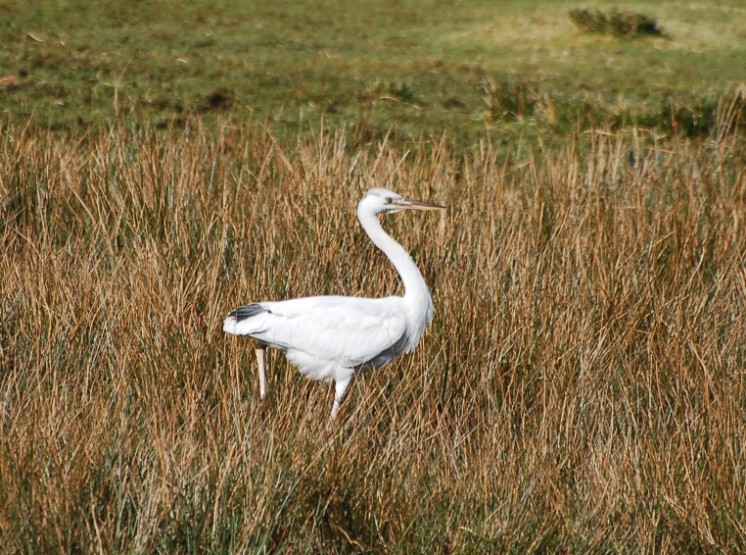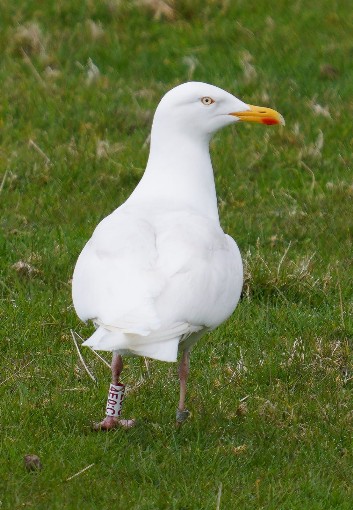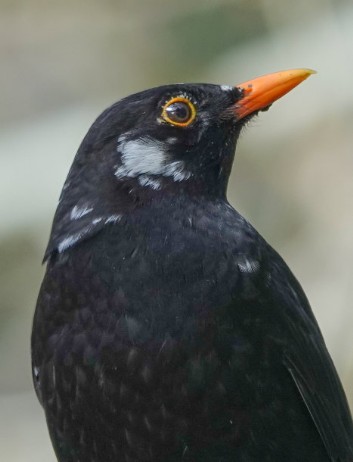Leucistic Birds
Reports

In leucistic birds, affected plumage lacks melanin pigment due to the cells responsible for melanin production being absent. This results in white feathers. There have been two previous Banner Bird Notes on this subject in 2016 Strange White Birds and in 2020 White-headed Finch? .
This March 2024 three birds showing degrees of leucism were reported to me.
On 15 March a leucistic Grey Heron was photographed in Lochranza. I have had reports from Lochranza of Grey Heron showing this condition since July 2017. I have only ever had leucistic Grey Heron reports from the Lochranza area and these reports have been decidedly patchy. One was initially claimed to be a Little Egret. Over this period of time, I have no idea if it has always been the same bird. The British Trust for Ornithology quote typical age of Grey Heron as 5 years but also mention a ringed Grey Heron at over twenty-three years old. Leucism can run in families.
On 18 March a leucistic Herring Gull was in a field in Kilpatrick Farm. The history of this bird is that it was first seen in Sliddery in June 2018 and was initially thought to be an Iceland Gull. It was caught and ringed. It was a leucistic Herring Gull. The ring has enabled this individual bird to be identified again. It has been reported every year since 2018 mainly on the west of the island.
On 20 March a Blackbird was photographed in Kildonan that had some leucistic feathers. The degree of leucism in birds can be very varied and in individual birds can change after each moult. There is much more information on this fascinating subject in this link Leucism & albinism | BTO - British Trust for Ornithology and within this link there is a place where these unusual birds can be reported. If you do see leucistic birds do take the time to report this to the BTO. This would help to increase our knowledge of this condition.

